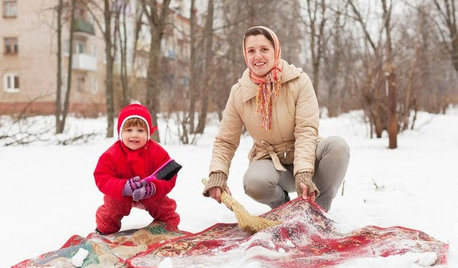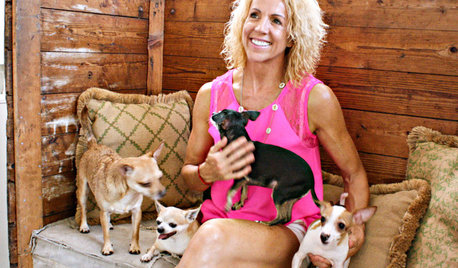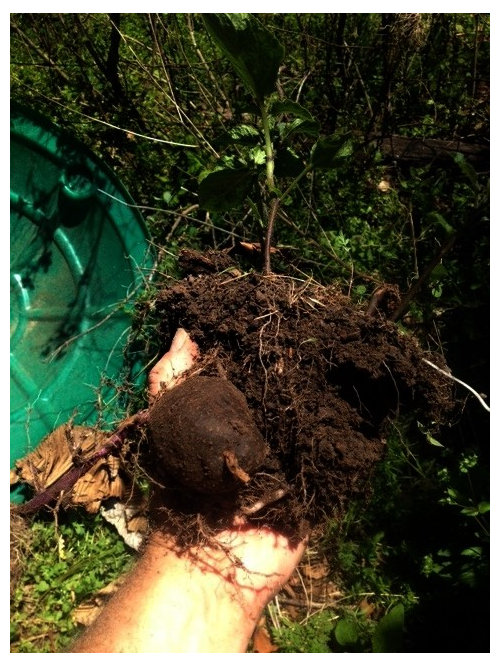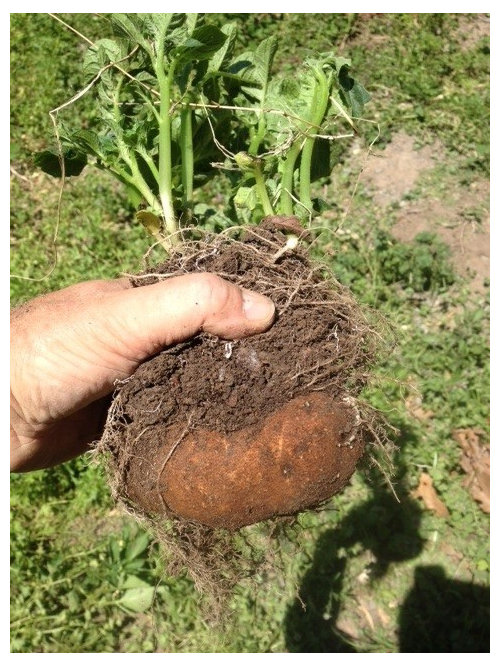Last year I grew a number of batches of seed (true seed, not seed potato) which I purchased from Tom Wagner. Tom is a genius potato and tomato breeder, and eccentric, in the best sense of the word. Tom doesn't go with "the pack," he does his own thing. So, his developments tend to be really different than what one might otherwise be able to get. I started my seed in January or February of 2013 and replanted the seedlings once or twice, each time more deeply than before, to better simulate starting from a seed potato. Then, I planted almost ONLY those potatoes. 2013 was the WORST year I've had for potatoes! We had grasshoppers from February on, and in June, they ate my plants to the ground. I only managed to find a few roots, ultimately giving up. I believe they were lost. I also lost my notes on what I planted and where.
Imagine my delight, this spring, when rows of sprouts turned up in my old potato patch! So, I went through and tried to dig up a start or two of each plant, and replanted them in new rows, elsewhere.
Saturday I finished with this. Yesterday I took my leftovers to the Green Country Seed Savers meeting and gave them away. I am encouraged, in that I found very nice sized roots from last year, making lots of sprouts. Here are some pictures.
This is a blue/black potato seedling. I know I grew seed from Tom Wagner's Azul Rose, though, there may be more strains in my garden. The blue/blacks tend to be more primitive and quite hardy. I noticed that at least some, have longer stolons and seemed to spread more from the original plant.
This is a fingerling type seedling, almost certainly from Huagalina. Huagalina is a Peruvian variety which was developed to meet the demand of Peruvian housewives, who objected to the lack of flavor of most commercial potatoes. Huagalina is an egg size, or smaller, potato. But Tom's seed was grown in a field with other varieties of many types. Apparently this one is a cross with something larger. If it tastes and produces well, that will suit me just fine!
This is a seedling which appears to be a russet. I didn't intentionally start any russet seedlings. And I do not know exactly what seed it came from. Yet, the plant itself appears to be exceedingly vigorous and the sprouting potatoes I found were pretty large. We'll see how it does this year.
Growing potatoes from seed has a couple of advantages: First of all, potatoes grown from seed are virus free! If were were limited to growing from our own roots, year after year, they would eventually become so virus laden that production would dwindle down to almost nothing. But if we can grow from seed, every couple of years, we could keep producing potatoes indefinitely. Potato seed, if kept in frozen storage, will last for at least 40 years. Secondly, if we can grow from seed and produce seed, then we have to potential to breed and select for varieties suited to our region and climate. At this point, none of our commercially available potatoes (to my knowledge) are adapted specially for our growing conditions. Finally, Tom Wagner is eccentric in the best sense of the word. He loves color and taste. He loves extremes in growing habit. Anyone who can cross (or allow potatoes to cross) and to grow from seed, has to potential to grow to their own tastes and purposes. For instance, Oklahoma would call for one of either two extremes in dormancy, which is an inherited trait. Either we would want a potato with a really long dormancy, so we could harvest and save seed potatoes for the coming year; or we would
be benefited from a really short dormancy potato, which we could dig and then drop right back in the ground for a fall crop. Neither of these traits are common in commercial varieties. But Tom has them and breeds for them!
The main difficulty for me, being in Oklahoma, is to actually reproduce seed from what I grow. Potato seed generally aborts when temps get above the 80s. I will have to work on this for years to come. But I hope, someday, to manage to produce a quantity of potato seed.
George
Tahlequah, OK




















mrsfrodo
wbonesteel
Related Professionals
Holly Springs Landscape Architects & Landscape Designers · Ballwin Landscape Architects & Landscape Designers · Lyons Landscape Architects & Landscape Designers · River Forest Landscape Architects & Landscape Designers · Surprise Landscape Contractors · Allentown Landscape Contractors · Arden-Arcade Landscape Contractors · Crystal Landscape Contractors · Dickinson Landscape Contractors · Fishers Landscape Contractors · Hicksville Landscape Contractors · Mahwah Landscape Contractors · Waldorf Landscape Contractors · Hayward Decks, Patios & Outdoor Enclosures · New York City Decks, Patios & Outdoor Enclosures